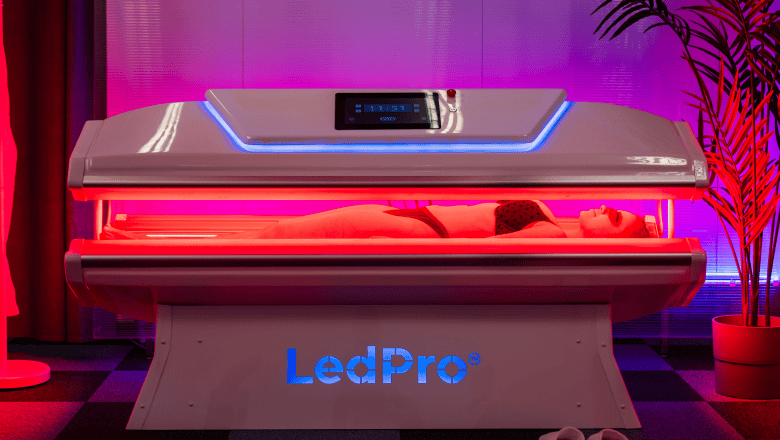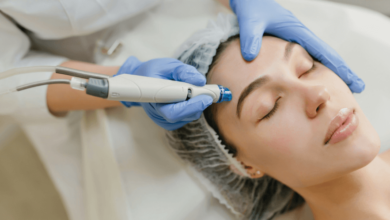Revolutionising Recovery: The Rise of Red Light Therapy Beds

The domain of wellness innovation has witnessed a substantial paradigm shift in recent years. Healthcare professionals and wellness enthusiasts are continually exploring new methods to enhance the body’s natural healing processes and improve overall health. Among the most revolutionary advancements in this field is the increased adoption of red light therapy beds, a modality that has shown promise in addressing various health concerns and supporting recovery.
Understanding Red Light Therapy
Red light therapy, also known as low-level light therapy (LLLT) or photobiomodulation, involves exposing the body to low wavelengths of red or near-infrared light. This form of therapy is predicated on the premise that certain wavelengths can penetrate the skin and be absorbed by the cells, leading to a cascade of metabolic events that can aid in healing and regeneration.
The underlying mechanism is believed to be the interaction of red light with mitochondria, the powerhouses of the cell, which can lead to enhanced cellular energy production and potentially reduce oxidative stress. The process is non-invasive, pain-free, and does not rely on heat to achieve its effects, which makes it an attractive option for a range of health and wellness applications.
The Emergence of Red Light Therapy Beds
While red light therapy devices have been available for some time, the advent of red light therapy beds is a considerably more recent development. These beds, which resemble traditional tanning beds in appearance, are equipped with panels of red and near-infrared LEDs designed to cover large areas of the body. Users lie inside the bed, typically for a session lasting anywhere from a few minutes to half an hour, receiving an even distribution of therapeutic light.
Applications and Benefits
One of the primary attractions of red light therapy beds is their versatility. They are being used to support skin health, enhance muscle recovery, reduce joint pain, and improve circulation. Most notably, the therapy is applauded for its ability to encourage skin rejuvenation, reducing the appearance of fine lines and wrinkles, and accelerating wound healing. Furthermore, the anti-inflammatory properties of red light therapy make it beneficial for those suffering from conditions like arthritis and other causes of chronic pain.
The athletic community has also taken interest in red light therapy beds for recovery enhancement. Sports professionals and fitness aficionados leverage the therapeutic effects to ameliorate muscle soreness and expedite recovery times between training sessions.
Scientific Backing and Acceptance
The rising popularity of red light therapy beds is underlined by a growing body of scientific research. Numerous studies have reported positive outcomes, including improved skin complexion, reduced signs of aging, and accelerated healing of musculoskeletal injuries. The therapy’s efficacy is further endorsed by its adoption in medical settings, with some healthcare providers incorporating it into treatment plans for various dermatological and physical therapy protocols.
Consumer Accessibility
The availability of red light therapy has historically been limited to clinical settings or through high-end wellness centres. However, the development of consumer-friendly red light therapy beds has made this therapeutic intervention more accessible to a broader audience. Many spas and wellness facilities now offer sessions with these beds as part of their service portfolio, allowing individuals to experience the benefits without the need for a specialist referral.
The Role of Wellness Facilities
Wellness facilities play a pivotal role in the dissemination of innovative therapies such as red light therapy beds. They serve not only as points of access for individual clients but also as educational hubs that inform the public about the advantages and proper use of such treatments. By offering state-of-the-art equipment and trained professionals to guide users, these facilities ensure a safe and effective experience.
Cost Considerations and ROI
For individuals contemplating whether to incorporate red light therapy into their wellness regimen, cost can be a significant factor. While the initial investment for sessions might seem high compared to other wellness practices, proponents argue that the potential long-term benefits—reduced reliance on pain medication, less downtime from injuries, and slowing skin aging—can offer an impressive return on investment.
Consumer Testimonials and Word of Mouth
Personal success stories and testimonials have played a substantial role in boosting the popularity of red light therapy beds. Word of mouth, bolstered by social media and wellness influencers, continues to spread awareness and drive interest. This grass-roots level of marketing, paired with positive clinical outcomes, has primed red light therapy beds for their current status as a sought-after element in the wellness innovation landscape.
The Future of Red Light Therapy Beds
The future of red light therapy beds seems optimistic, with ongoing research paving the way for further applications and advancements. As healthcare trends increasingly favour non-invasive and preventative approaches, red light therapy beds are well-positioned to become a mainstay in the toolkit for personal health and wellness maintenance.
Staying Informed and Making Choice
As with any wellness innovation, interested individuals should stay informed and consult with healthcare professionals to determine the suitability of red light therapy for their specific needs. It’s essential to choose reputable providers of red light therapy bed sessions, ensuring that the equipment and protocols follow industry standards for safety and effectiveness.
In conclusion, red light therapy beds embody the evolution of recovery and wellness, marking a significant stride in the direction of enhanced well-being. Through the convergence of science, innovation, and consumer accessibility, these beds are revolutionising the way we approach recovery and skin health. As evidence of their effectiveness continues to mount, we can anticipate that red light therapy beds will become an even more integral part of holistic health practices worldwide.





